Pedodiversity of paleosols formed during MIS 3 within

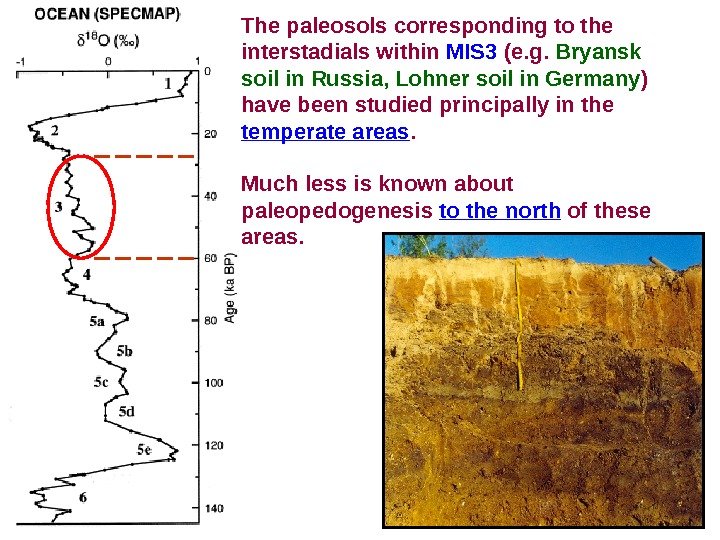

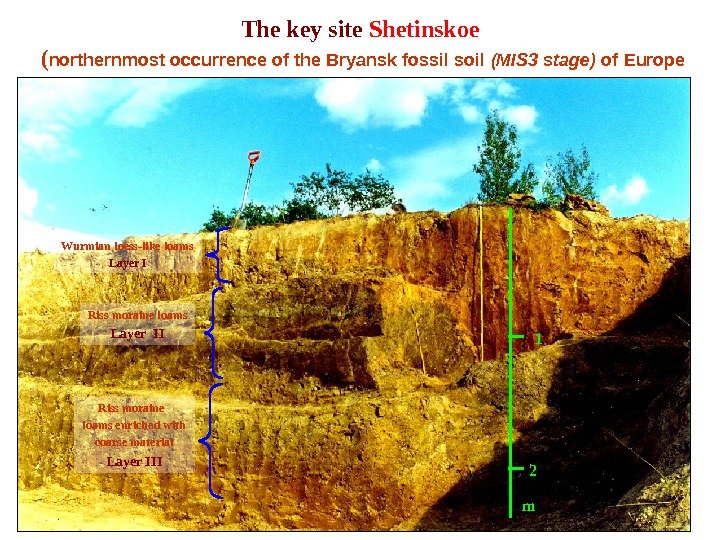
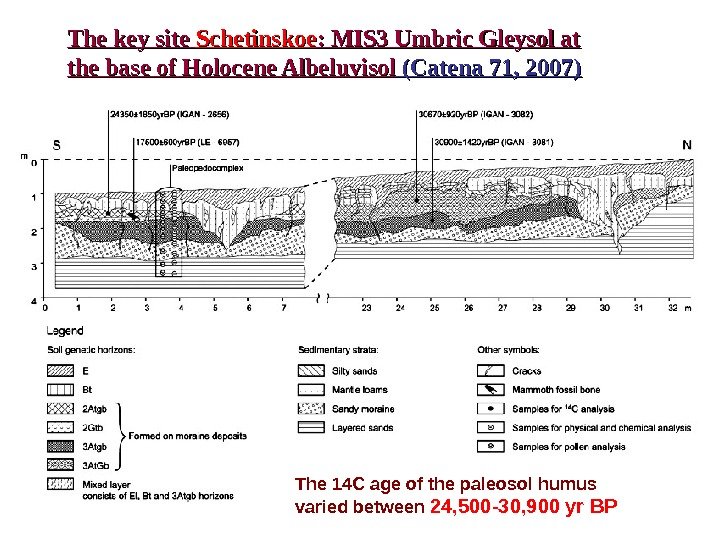
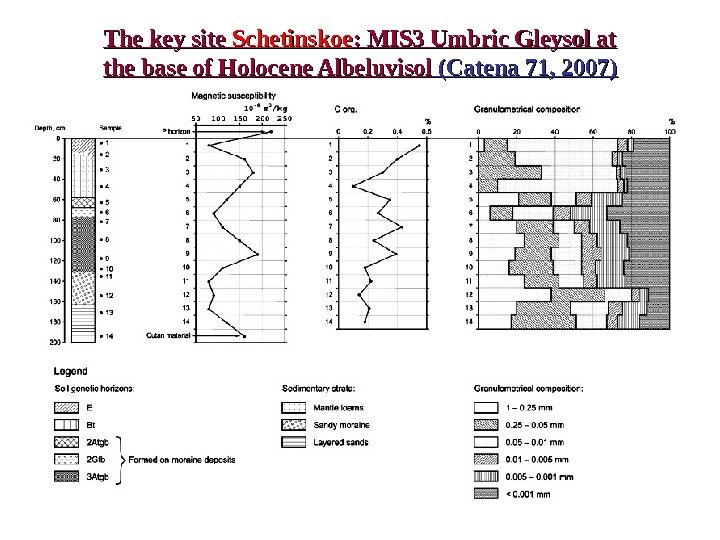




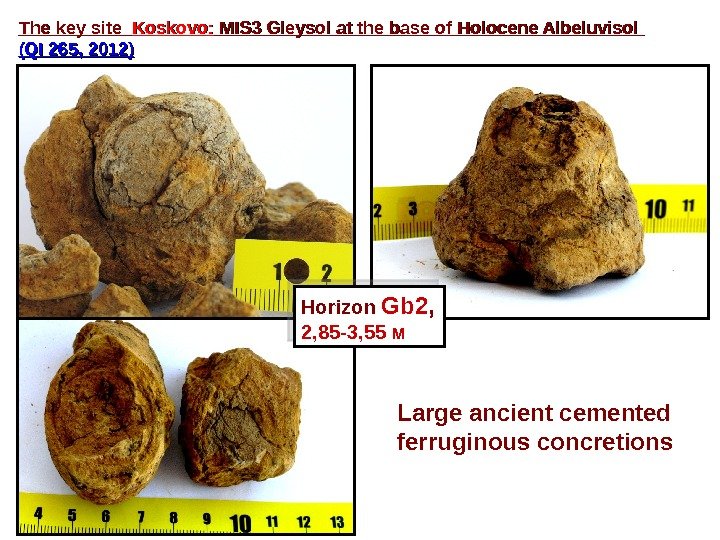


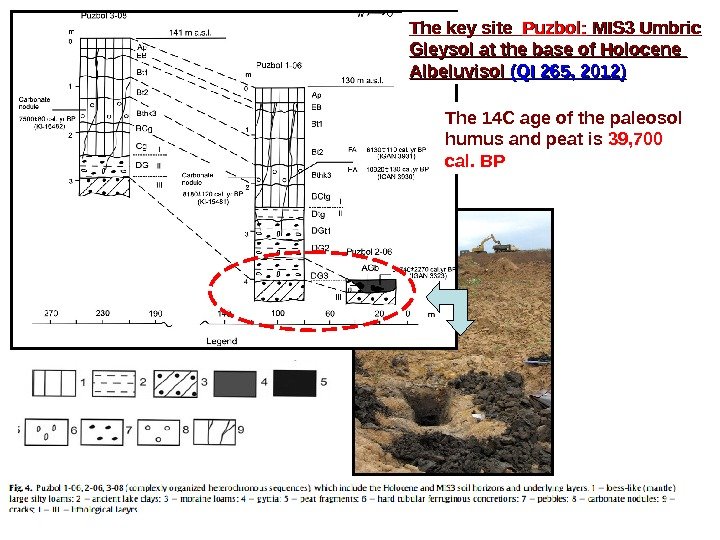
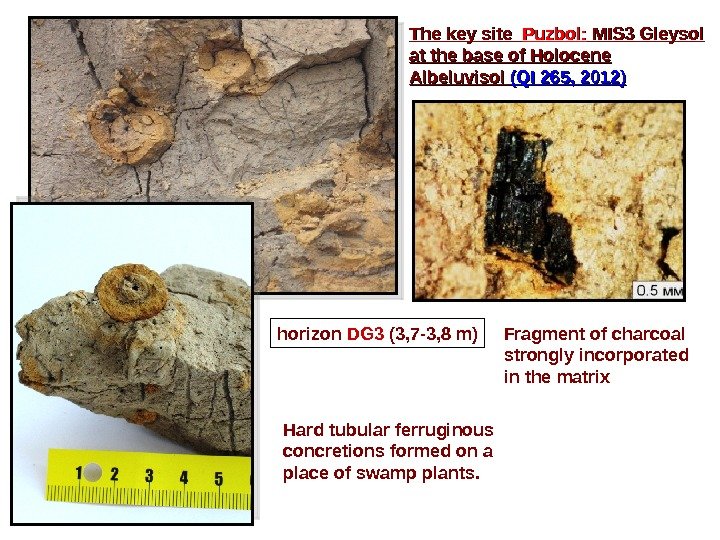
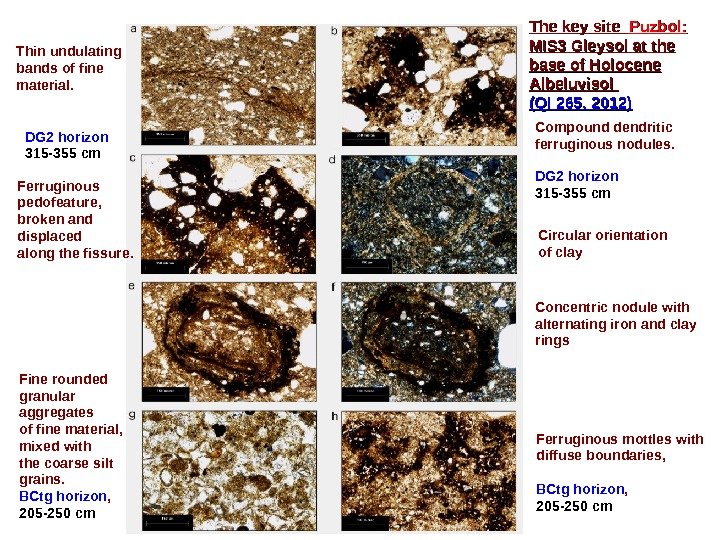





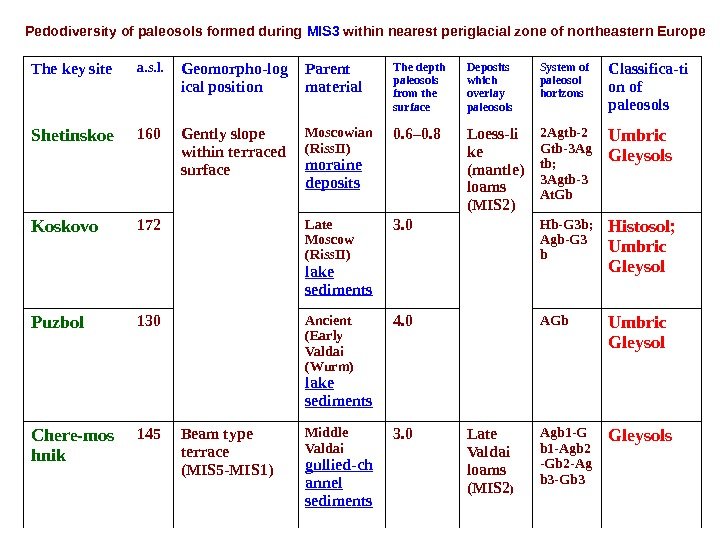
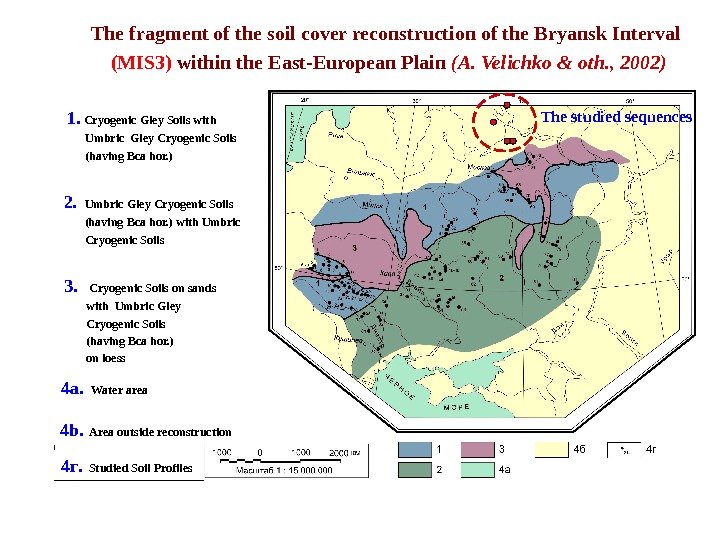
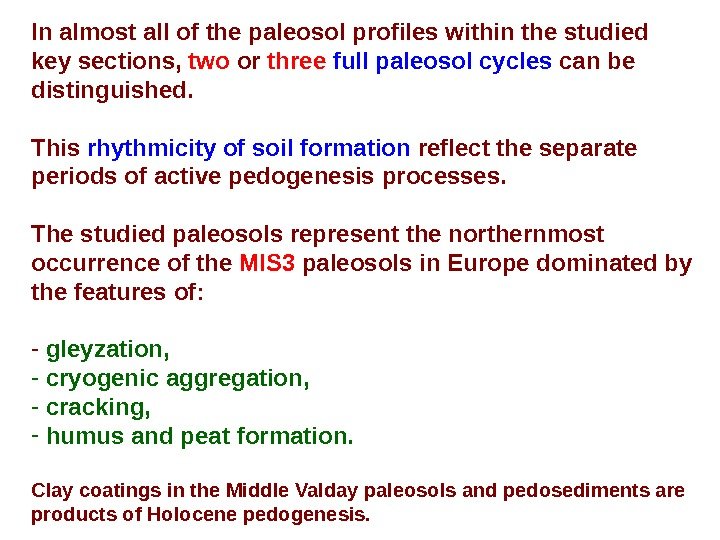
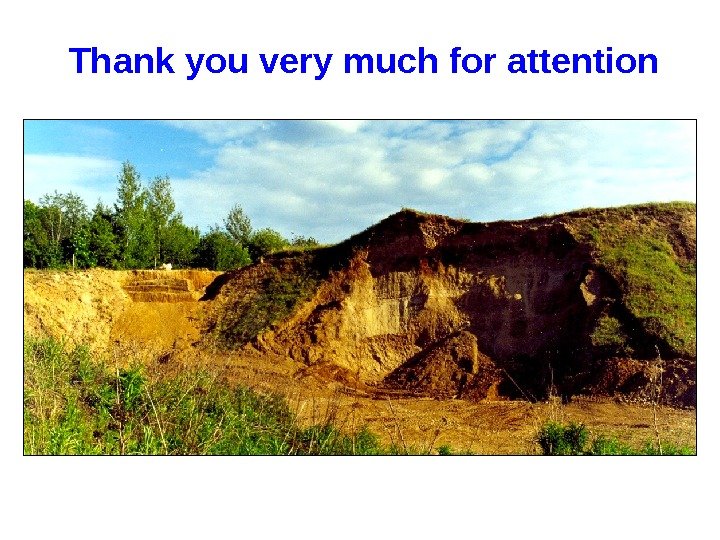
rusakov_et-al_krems_2014.ppt
- Размер: 18.3 Мб
- Автор:
- Количество слайдов: 25
Описание презентации Pedodiversity of paleosols formed during MIS 3 within по слайдам
 Pedodiversity of paleosols formed during MIS 3 within nearest periglacial zone of northeastern Europe Alexey Rusakov Maria Korkka University of St. Petersburg, Russia Sergey Sedov Instituto de Geología, Universidad Nacional Aut ónoma de México Elena Rusakova University of St. Petersburg, Russia
Pedodiversity of paleosols formed during MIS 3 within nearest periglacial zone of northeastern Europe Alexey Rusakov Maria Korkka University of St. Petersburg, Russia Sergey Sedov Instituto de Geología, Universidad Nacional Aut ónoma de México Elena Rusakova University of St. Petersburg, Russia
 The paleosols corresponding to the interstadials within MIS 3 (e. g. Bryansk soil in Russia, Lohner soil in Germany ) have been studied principally in the temperate areas. Much less is known about paleopedogenesis to the north of these areas.
The paleosols corresponding to the interstadials within MIS 3 (e. g. Bryansk soil in Russia, Lohner soil in Germany ) have been studied principally in the temperate areas. Much less is known about paleopedogenesis to the north of these areas.
 Maximum extent of the Late Valday Glaciation (20 -18 thousands YR BP ) ( Dynamics of terrestrial landscape …. 2002) Continuous loess cover of the Valday (Wűrmian) age within the periglacial zone. Moscow Four key sites (sequenses) containing MIS 3 paleosols / pedocomplexes in the nearest periglacial zone (the upper Volga River Basin)
Maximum extent of the Late Valday Glaciation (20 -18 thousands YR BP ) ( Dynamics of terrestrial landscape …. 2002) Continuous loess cover of the Valday (Wűrmian) age within the periglacial zone. Moscow Four key sites (sequenses) containing MIS 3 paleosols / pedocomplexes in the nearest periglacial zone (the upper Volga River Basin)
 The key site Shetinskoe ( northernmost occurrence of the Bryansk fossil soil (MIS 3 stage) of Europe 1 2 m. Wurmian loess-like loams Layer I Riss moraine loams Layer II Riss moraine loams enriched with coarse material Layer III
The key site Shetinskoe ( northernmost occurrence of the Bryansk fossil soil (MIS 3 stage) of Europe 1 2 m. Wurmian loess-like loams Layer I Riss moraine loams Layer II Riss moraine loams enriched with coarse material Layer III
 The key site Schetinskoe : MIS 3 Umbric Gleysol at the base of Holocene Albeluvisol (Catena 71, 2007) The 14 C age of the paleosol humus varied between 24, 5 00 — 3 0 , 9 00 yr BP
The key site Schetinskoe : MIS 3 Umbric Gleysol at the base of Holocene Albeluvisol (Catena 71, 2007) The 14 C age of the paleosol humus varied between 24, 5 00 — 3 0 , 9 00 yr BP
 The key site Schetinskoe : MIS 3 Umbric Gleysol at the base of Holocene Albeluvisol (Catena 71, 2007)
The key site Schetinskoe : MIS 3 Umbric Gleysol at the base of Holocene Albeluvisol (Catena 71, 2007)
 2 Atgb hor. 2 Gtgb hor. 3 Atgb hor. 2 Atgb hor. Strong development of argillans on ped faces Argillans in the channels of large pores Contact argillans and ferrugineous cutans developed within microagregate space. Profile Schetinskoe : MIS 3 Gleysol at the base of Holocene Albeluvisol (Catena 71, 2007)
2 Atgb hor. 2 Gtgb hor. 3 Atgb hor. 2 Atgb hor. Strong development of argillans on ped faces Argillans in the channels of large pores Contact argillans and ferrugineous cutans developed within microagregate space. Profile Schetinskoe : MIS 3 Gleysol at the base of Holocene Albeluvisol (Catena 71, 2007)
 plane polarized light small charcoal fragments, incorporated in the matrix ferruginous nodule of specific shape, not found in the overlying horizonsplanar voids. Profile Schetinskoe : : MIS 3 Gleysol at the base of Holocene Albeluvisol (Catena 71, 2007)
plane polarized light small charcoal fragments, incorporated in the matrix ferruginous nodule of specific shape, not found in the overlying horizonsplanar voids. Profile Schetinskoe : : MIS 3 Gleysol at the base of Holocene Albeluvisol (Catena 71, 2007)
 The key site Koskovo: MIS 3 Umbric Gleysol at the base of Holocene Albeluvisol (QI 265, 2012) The 14 C age of the paleosol humus and peat varied between 50, 300 — 3 7 , 0 00 cal. BP Agb Gb
The key site Koskovo: MIS 3 Umbric Gleysol at the base of Holocene Albeluvisol (QI 265, 2012) The 14 C age of the paleosol humus and peat varied between 50, 300 — 3 7 , 0 00 cal. BP Agb Gb
 Horizon Gb 1 , 2, 65 -2, 85 м Reddish-ochreous spots, diffuse rings, ferruginous concretions (rorenstains)The key site Koskovo: MIS 3 Gleysol at the base of Holocene Albeluvisol (QI 265, 2012)
Horizon Gb 1 , 2, 65 -2, 85 м Reddish-ochreous spots, diffuse rings, ferruginous concretions (rorenstains)The key site Koskovo: MIS 3 Gleysol at the base of Holocene Albeluvisol (QI 265, 2012)
 Horizon Gb 2 , 2, 85 -3, 55 м Large ancient cemented ferruginous concretions. The key site Koskovo: MIS 3 Gleysol at the base of Holocene Albeluvisol (QI 265, 2012)
Horizon Gb 2 , 2, 85 -3, 55 м Large ancient cemented ferruginous concretions. The key site Koskovo: MIS 3 Gleysol at the base of Holocene Albeluvisol (QI 265, 2012)
 The key site Koskovo: (QI 265, 2012)Very compact arrangement with porphyritic relative distribution G 3 b horizon , PPL. Horizontally oriented plant fragments trap few sand grains. Hb horizon, PPL. Brocken charcoal particle, mineral groundmass separates fragments. Agb horizon, PPL. Microareas enriched with sand clay- humus fine material. Agb horizon , PPL. Ferruginous coatings and nodules neighbor pale areas depleted in iron. G 2 b horizon, PPL. Deformed plant fragment surrounded by mineral groundmass. G 2 b horizon Clay coating in the fissure. G 1 b horizon, PPL , N +
The key site Koskovo: (QI 265, 2012)Very compact arrangement with porphyritic relative distribution G 3 b horizon , PPL. Horizontally oriented plant fragments trap few sand grains. Hb horizon, PPL. Brocken charcoal particle, mineral groundmass separates fragments. Agb horizon, PPL. Microareas enriched with sand clay- humus fine material. Agb horizon , PPL. Ferruginous coatings and nodules neighbor pale areas depleted in iron. G 2 b horizon, PPL. Deformed plant fragment surrounded by mineral groundmass. G 2 b horizon Clay coating in the fissure. G 1 b horizon, PPL , N +
 Rostov Velikiy (Yaroslavl District), founded in the year 862.
Rostov Velikiy (Yaroslavl District), founded in the year 862.
 The key site Puzbol: MIS 3 Umbric Gleysol at the base of Holocene Albeluvisol (QI 265, 2012) The 14 C age of the paleosol humus and peat is 39 , 7 00 cal. BP
The key site Puzbol: MIS 3 Umbric Gleysol at the base of Holocene Albeluvisol (QI 265, 2012) The 14 C age of the paleosol humus and peat is 39 , 7 00 cal. BP
 horizon DG 3 (3 , 7 -3 , 8 m )The key site Puzbol: MIS 3 Gleysol at the base of Holocene Albeluvisol (QI 265, 2012) H ard tubular ferruginous concretions formed on a place of swamp plants. Fragment of charcoal strongly incorporated in the matrix
horizon DG 3 (3 , 7 -3 , 8 m )The key site Puzbol: MIS 3 Gleysol at the base of Holocene Albeluvisol (QI 265, 2012) H ard tubular ferruginous concretions formed on a place of swamp plants. Fragment of charcoal strongly incorporated in the matrix
 Thin undulating bands of fine material. Compound dendritic f erruginous nodules. The key site Puzbol: MIS 3 Gleysol at the base of Holocene Albeluvisol (QI 265, 2012) Ferruginous pedofeature, broken and displaced along the fissure. DG 2 horizon 315 -355 cm Circular orientation of clay. DG 2 horizon 315 -355 cm Concentric nodule with alternating iron and clay rings Fine rounded granular aggregates of fine material, mixed with the coarse silt grains. BCtg horizon , 205 -250 cm Ferruginous mottles with diffuse boundaries, BCtg horizon , 205 -250 cm
Thin undulating bands of fine material. Compound dendritic f erruginous nodules. The key site Puzbol: MIS 3 Gleysol at the base of Holocene Albeluvisol (QI 265, 2012) Ferruginous pedofeature, broken and displaced along the fissure. DG 2 horizon 315 -355 cm Circular orientation of clay. DG 2 horizon 315 -355 cm Concentric nodule with alternating iron and clay rings Fine rounded granular aggregates of fine material, mixed with the coarse silt grains. BCtg horizon , 205 -250 cm Ferruginous mottles with diffuse boundaries, BCtg horizon , 205 -250 cm
 Boundary of the Ostashkovo or Valday (Wűrmian) glaciation in the East European Plain (1) ( Chebotareva and Makarycheva, 1982 ) and location of the Cheremoshnik key site (2) The Cheremoshnik key site (Borisoglebskaya Upland ) ~2. 0 km east of the Puzbol key section.
Boundary of the Ostashkovo or Valday (Wűrmian) glaciation in the East European Plain (1) ( Chebotareva and Makarycheva, 1982 ) and location of the Cheremoshnik key site (2) The Cheremoshnik key site (Borisoglebskaya Upland ) ~2. 0 km east of the Puzbol key section.
 Depth of the cleared outcrop ~ 7, 0 м , w idth – 6, 5 м , general view of the exposure, 2012 The Cheremoshnik key section Late Pleistocene beam-type terrace (~7 m deep) MIS 3 paleosols
Depth of the cleared outcrop ~ 7, 0 м , w idth – 6, 5 м , general view of the exposure, 2012 The Cheremoshnik key section Late Pleistocene beam-type terrace (~7 m deep) MIS 3 paleosols
 Chronostratigraphy, morphology and some properties of soil- sedimentary strata of the Cheremoshnik key section. The Bryansk paleosol ( MIS 3 ) Sum of Agb 2 and Agb 3 horizons The 14 C age is 27 , 480± 560 cal yr BP
Chronostratigraphy, morphology and some properties of soil- sedimentary strata of the Cheremoshnik key section. The Bryansk paleosol ( MIS 3 ) Sum of Agb 2 and Agb 3 horizons The 14 C age is 27 , 480± 560 cal yr BP
 The Cheremoshnik key section Agb 2 Gb 2 The Bryansk ( MIS 3 ) Gleysols
The Cheremoshnik key section Agb 2 Gb 2 The Bryansk ( MIS 3 ) Gleysols
 The classification of paleosols is somewhat challenging because many pedogenetic features could be erased by subsequent diagenetic processes , and thus only stable features may be used for classifying paleosols ( Mack et al. , 1993 ). Thus, several schemes for paleosol classification have been developed using only the stable properties of soils , based both on the USDA Soil Taxonomy ( Nettleton et al. , 2000 ) and the WRB ( Krasilnikov and García Calderón, 2006 ). However, these classifications are seldom used by paleopedologists, probably because the available terminology does not provide immediate associations with certain environments. Most researchers prefer using the same terms for buried paleosols as for surface soils , but use only stable diagnostic criteria for their classification.
The classification of paleosols is somewhat challenging because many pedogenetic features could be erased by subsequent diagenetic processes , and thus only stable features may be used for classifying paleosols ( Mack et al. , 1993 ). Thus, several schemes for paleosol classification have been developed using only the stable properties of soils , based both on the USDA Soil Taxonomy ( Nettleton et al. , 2000 ) and the WRB ( Krasilnikov and García Calderón, 2006 ). However, these classifications are seldom used by paleopedologists, probably because the available terminology does not provide immediate associations with certain environments. Most researchers prefer using the same terms for buried paleosols as for surface soils , but use only stable diagnostic criteria for their classification.
 The key site a. s. l. Geomorpho-log ical position Parent material The depth paleosols from the surface Deposits which overlay paleosols System of paleosol horizons Classifica-ti on of paleosols Shetinskoe 160 Gently slope within terraced surface Moscowian (Riss. II) moraine deposits 0. 6– 0. 8 Loess-li ke (mantle) loams (MIS 2) 2 Agtb-2 Gtb-3 Ag tb; 3 Agtb-3 At. Gb Umbric Gleysols Koskovo 172 Late Moscow (Riss. II) lake sediments 3. 0 Hb-G 3 b; Agb-G 3 b Histosol; Umbric Gleysol Puzbol 130 Ancient (Early Valdai (Wurm) lake sediments 4. 0 AGb Umbric Gleysol Chere — mos hnik 145 Beam type terrace (MIS 5 -MIS 1) Middle Valdai gullied-ch annel sediments 3. 0 Late Valdai loams (MIS 2 ) Agb 1 -G b 1 -Agb 2 -Gb 2 -Ag b 3 -Gb 3 Gleysols. Pedodiversity of paleosols formed during MIS 3 within nearest periglacial zone of northeastern Europe
The key site a. s. l. Geomorpho-log ical position Parent material The depth paleosols from the surface Deposits which overlay paleosols System of paleosol horizons Classifica-ti on of paleosols Shetinskoe 160 Gently slope within terraced surface Moscowian (Riss. II) moraine deposits 0. 6– 0. 8 Loess-li ke (mantle) loams (MIS 2) 2 Agtb-2 Gtb-3 Ag tb; 3 Agtb-3 At. Gb Umbric Gleysols Koskovo 172 Late Moscow (Riss. II) lake sediments 3. 0 Hb-G 3 b; Agb-G 3 b Histosol; Umbric Gleysol Puzbol 130 Ancient (Early Valdai (Wurm) lake sediments 4. 0 AGb Umbric Gleysol Chere — mos hnik 145 Beam type terrace (MIS 5 -MIS 1) Middle Valdai gullied-ch annel sediments 3. 0 Late Valdai loams (MIS 2 ) Agb 1 -G b 1 -Agb 2 -Gb 2 -Ag b 3 -Gb 3 Gleysols. Pedodiversity of paleosols formed during MIS 3 within nearest periglacial zone of northeastern Europe
 The fragment of the soil cover reconstruction of the Bryansk Interval (MIS 3) within the East-European Plain (A. Velichko & oth. , 2002) 1. Cryogenic Gley Soils with Umbric Gley Cryogenic Soils (having Bca hor. ) 2. Umbric Gley Cryogenic Soils (having Bca hor. ) with Umbric Cryogenic Soils 3. Cryogenic Soils on sands with Umbric Gley Cryogenic Soils (having Bca hor. ) on loess 4 a. Water area 4 b. Area outside reconstruction 4 г. Studied Soil Profiles The studied sequences
The fragment of the soil cover reconstruction of the Bryansk Interval (MIS 3) within the East-European Plain (A. Velichko & oth. , 2002) 1. Cryogenic Gley Soils with Umbric Gley Cryogenic Soils (having Bca hor. ) 2. Umbric Gley Cryogenic Soils (having Bca hor. ) with Umbric Cryogenic Soils 3. Cryogenic Soils on sands with Umbric Gley Cryogenic Soils (having Bca hor. ) on loess 4 a. Water area 4 b. Area outside reconstruction 4 г. Studied Soil Profiles The studied sequences
 In almost all of the paleosol profiles within the studied key sections, two or three full paleosol cycles can be distinguished. This rhythmicity of soil formation reflect the separate periods of active pedogenesis processes. Th e studied paleosols represent the northernmost occurrence of the MIS 3 paleosols in Europe dominated by the features of : — gleyzation, — cryogenic aggregation, — cracking, — humus and peat formation. Clay coatings in the Middle Valday paleosols and pedosediments are products of Holocene pedogenesis.
In almost all of the paleosol profiles within the studied key sections, two or three full paleosol cycles can be distinguished. This rhythmicity of soil formation reflect the separate periods of active pedogenesis processes. Th e studied paleosols represent the northernmost occurrence of the MIS 3 paleosols in Europe dominated by the features of : — gleyzation, — cryogenic aggregation, — cracking, — humus and peat formation. Clay coatings in the Middle Valday paleosols and pedosediments are products of Holocene pedogenesis.
 Thank you very much for attention
Thank you very much for attention
